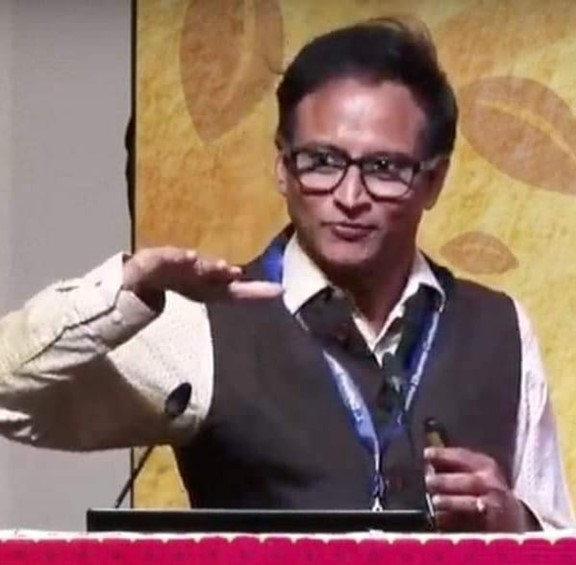Establishing nonviolence as the central principle in our relationship with nature is the key to an effective and lasting environmental movement
For observant Hindus, Jains and Buddhists, hurting or harming another being damages one's karma and obstructs advancement toward moksha, liberation. Mahavira, the last great teacher of Jainism, even proclaimed that ahimsa, nonviolence, is the greatest dharma. In modern times, Mahatma Gandhi is a shining example of a dedicated practitioner of ahimsa, advocating ecological practices which created harmony with nature.
When I mentioned this to my students recently, one immediately questioned me and asked if Indians in India are following the principles of Gandhi, and, if not, how can we expect others to do so? It is true that India and many other emerging nations in the world are enthusiastically aping the West with its ever-expanding economy and ever-shrinking natural resources. I was also asked two related questions recently at a conference on World Religions and Ecology: "What do the non-Western countries expect of the Western countries? If the rest of the world is eager to make the same mistakes the West did, what route should the West now take to ensure the planet's survival?" Perhaps one answer is to embrace Gandhi's ecological practices. If the West is to remain the intellectual leader of the world, the quicker it reforms and transforms itself, the better for our planet. So long as the West continues to crave more natural resources without changing its lifestyle, it will continue to lack the moral authority to preach to other cultures. It was the West that led the world with its modern scientific and technological innovations for the last several centuries. The West must now emerge as a new ecological leader, with Gandhi as the foundation of its lifestyle. All voices to save the planet's ecology are hollow rhetoric until that happens.
There cannot be and should not be a separate "war on terrorism," "war on climate change," "war on drugs," "war on corruption," "war on obesity" and so on. All aspects of modern life--our physical, mental, and spiritual health, the environment, the global security and international peace, social justice, and so on--will get a great boost if we first become nonviolent in our most basic activity: eating and surviving. "We are what we eat." This is such a simple statement and yet is so widely ignored all over the world. This is the way Gandhi lived every day, and his protest against the imperial power was influential because it was based on his own great life--unlike many contemporary activists whose own lives are nowhere close to Gandhi's.
Gandhi's entire life can be seen as an ecological treatise. This is one life in which every minute act, emotion or thought functioned much like an ecosystem: his small meals of nuts and fruits, his morning ablutions and everyday bodily practices, his periodic observances of silence, his morning walks, his cultivation of the small as much as of the big, his spinning wheel, his abhorrence of waste, his observance of basic Hindu and Jain values of truth, nonviolence, celibacy and fasting. Gandhi's life and his dharmic teachings have inspired today's moralists, nonviolent activists, feminists, journalists, social reformers, trade union leaders, peasants, prohibitionists, nature-cure lovers, renouncers and environmentalists.
Despite all the recent advances in India's economy and consumerism, Gandhi's inspiration still thrives in modern India as an alternative perspective. Many contemporary environmental activists and dharmic leaders have modeled their lives taking their inspirations from dharmic teachings of India or have resisted the global consumerist pressure in various other ways. These include Sunderlal Bahuguna (now in his 80s, leader of the famous Chipko Movement in North India); Medha Patkar (a strong voice against big dams in Central India); Dr. Vandana Shiva (fierce critic of Western-style globalism and capitalism); Anna Hazare (in headlines recently for his major protest against political corruption, also famous for his ecological experiments in his village in Central India); Pandurang Hedge (man who is leading Chipko-style movement in South India); the late Pandurang Shastri Athavale (with his global Swadhyaya Parivar); the late Anil Agarwal (founder of Center for Science and Environment). In addition, there are hundreds of smaller voices spread all over India, making India the home of the biggest environmental movement on the planet, according to Dr. Christopher Chapple in Hinduism and Ecology. There are also dozens of institutions founded by Gandhi himself in several Indian towns that are still flourishing with their own small-scale production of textiles and agriculture. Almost every Indian political party must use at least the rhetoric based on Gandhi's values whenever there is a discussion on taking technology or any kind of help from the USA, UK, France or other major Western power. Finally, several recent major Bollywood blockbusters feature Gandhi-like figures, reminding the audience of his message of nonviolence and civil disobedience.
Yes, Gandhi's immortal soul and other dharmic traditions of India are still vibrant even in the 21st-century globalized consumerist society. Several decades ago, in his nonviolent movement for civil rights, Dr. Martin Luther King said, "Christ furnished the spirit and motivation, while Gandhi furnished the method." It is time again to go back to these cherished values propounded by Christ, Gandhi and Dr. King. All three practiced and preached an absolutely simple lifestyle. All of humanity must now start to practice a simpler lifestyle, one that is nonviolent not just toward other human beings but also toward the entire Earth.
 Professor Ph. D. Pankaj Jain
Professor Ph. D. Pankaj Jain